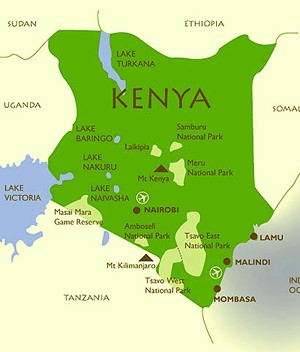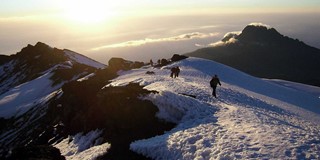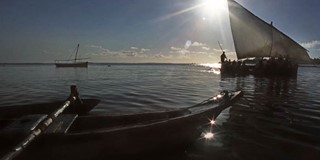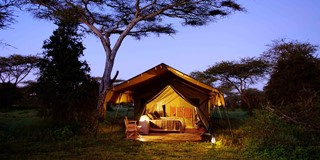
Maasai Mara Game Reserve
Speak to our tour consultants for a more custom made itinerary to suit your travel needs.
Tel: +254 706 124 625

- Background Information
- Wildlife and Birds
- The Maasai People
A unique area: The Maasai Mara is undoubtedly the Jewel in the Crown of East Africa, forever to be associated with vast numbers of game, the unique spectacle of its animal migration unchanged over the centuries. This is Hollywood Africa: vast rolling grass plains interspersed with rounded hills, groves of woodlands, dense scrub thickets and the riverine forest of the Mara River which bisects the area. Smaller rivers feed massive fig trees growing along their banks. The word Mara is Maasai for “mottled” - and when flying over the plains of the Mara or observing them from the vantage point of one of the surrounding hills, it becomes evident why this area was so named.
The Mara is the northernmost extension of the Serengeti ecosystem and is a micro-habitat in its own right. The inner reserve of 518sq km (200 sq miles) allows no intrusion of human settlement, while the outer remains basically undeveloped, an area where local Maasai pasture their cattle and co-exist with the game. It is probably the most famous reserve in Kenya. Its breathtaking views became familiar worldwide when the film ‘Out of Africa’ was released, as much of it was filmed in the Mara. It is perhaps the only region left in Kenya where visitors may see the super-abundance of animals that existed a century ago.
During the months of July to December the spectacle of the migration unfolds as a million and a half Wildebeest and Zebra, with all their attendant carnivores, Lion (including the rare black-maned variety), Leopard, Cheetah, two types of Hyena, three types of Jackal, the occasional Aardwolf and sometimes large packs of African Wild Dog move across the vast open plains. At a distance the plains appear to be infested with lines of black ants. A closer view reveals it to be Wildebeest - those curious creatures aptly called “the clowns of the plains”. The sound of their grunting fills the air and the spectacle is almost unbelievable.
All these animals have to cross the Mara, which provides another unique sight. As crowds of these ungainly Wildebeest throng down the steep banks in a cloud of dust and swim across the churning brown water, some of them are swept away and others grabbed by crocodiles. Engorged crocodiles bask on the banks, while flocks of vultures and other scavengers congregate to clean up remains. The rest of the year is never dull either, as large numbers of predators remain resident, and are commonly seen hunting herbivores. The plains’ game is also always present in varying numbers, and includes Thompson’s and Grant’s Gazelles, Coke’s Hartebeest, Topi, Eland, Waterbuck, and Impala. Elephants are plentiful and it’s not uncommon to be held up by elephants on the road. Hippo and Crocodile are easy to see, basking in the river - and it is not so unusual to see a hippo grazing on the river banks before nightfall.
Birdlife is varied and profuse. Turacos, the rarer Crested Guinea Fowl, Blue Flycatcher and Pel’s fishing owl can be seen in the riverine forest while several varieties of Bustards (including rarer ones) can be seen on the plains - as can the spectacular Ground Hornbills and comical secretary birds. Vultures and eagles can be seen circling overhead or perched on trees, while over 50 different species of birds of prey have been recorded. From November to March many annual migrant visitors are present in large numbers and bird-watchers will always be rewarded with much to record.
“A Maasai warrior is a fine sight. Those young men have, to the utmost extent, that particular form of intelligence which we call chic; daring and wildly fantastical as they seem, they are still unswervingly true to their own nature, and to an immanent ideal. Their style is not an assumed manner, nor an imitation of a foreign perfection; it has grown from the inside, and is an expression of the race and its history, and their weapons and finery are as much a part of their being as are a stag's antlers." Extract from ‘Out of Africa’ by Karen Blixen
Perhaps more than any other communities in Kenya the Maasai have learned to live in complete harmony with their environment and the wildlife which surrounds them. They still follow their traditional way of life to a large extent. But throughout Maasailand changes are inexorably happening: more children attend school, more women are earning money from the sale of their colorful beadwork, and more young men are seeking employment in towns and tourist lodges. Traditionally, the Maasai are a cattle-keeping people. Cattle once provided almost all their daily needs: milk and blood as food, hides for leather and meat on ceremonial occasions. Sheep, goats and donkeys are also kept and the size of the herds is still a significant measure of wealth and power amongst the Maasai community.
::: Select Recommended Tours :::
-

Kilimanjaro Climb - 5Days Marangu
The Marangu route is one of the most popular routes to the summit of your Kilimanjaro Climb.
-

Zanzibar Luxury Beach Tour
Explore Zanzibar Beaches in style with exclusive access to top 5star properties in Zanzibar.
-

Kenya & Tanzania Adventure
Combine two of the best top Wildlife and Safari Destinations in East Africa - Kenya & Tanzania..